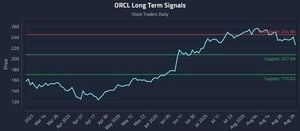JEDDAH, Saudi Arabia (AP) — The Red Sea International Film Festival, held from December 7 to 11, has emerged as a symbol of the new era of cinema burgeoning within Saudi Arabia, showcasing its vibrant film scene only five years after the country lifted its 35-year cinema ban. Recently, Roula Dakheelallah, the star of the film "My Driver and I," received the prestigious Chopard Emerging Saudi Talent award at the festival, highlighting the country’s commitment to cultivating local talent and reshaping its entertainment industry.
Eight years prior, the film "My Driver and I" aimed for production but was halted due to the long-standing cinema ban. Today, the cinematic atmosphere has shifted dramatically, allowing creators like Dakheelallah to thrive. "My heart is attached to cinema and art; I have always dreamed of a moment like this," Dakheelallah expressed after receiving her award, noting her roots started from volunteering on films. The cultural turning point began with the reopening of cinemas in 2018—a significant step for this absolute monarchy previously influenced by ultraconservative factions.
Built on the foundations of Crown Prince Mohammad bin Salman’s Vision 2030 reforms, Saudi Arabia is investing significantly to build its native film industry. By April of this year, 66 cinemas had opened across 22 cities, showing not only local productions but also Hollywood and Bollywood films. The country plans to construct 350 cinemas with over 2,500 screens as part of its extensive entertainment expansion.
Alongside the emergence of the Red Sea International Film Festival, the festival aims to establish Saudi Arabia as a cultural leader, drawing attention from international filmmakers and actors. The lineup included luminaries such as Viola Davis and Priyanka Chopra Jonas, who were also honored during the festival, demonstrated the kingdom's desire to project its new cultural ambitions onto the global stage.
Among notable infrastructure developments is Al Hisn Studios, opened just last month near Riyadh. Positioned as one of the largest film production hubs in the Middle East, the studios feature not only film facilities but also specialized workshops for various crafts. "These facilities, when they exist, will stimulate filmmakers," said actor Mohammed Elshehri. With such facilities, it’s hoped local creators will no longer have excuses to limit their imaginations.
The media company Telfaz11, which began as a YouTube channel, plays a significant role in this cultural renaissance. Producing high-quality digital content, including short films and series, Telfaz11 has partnered with Netflix since 2020, allowing for more complex storytelling previously deemed too sensitive for public discourse. Films like "Mandoob" and "Naga" address once-taboo subjects, demonstrating the pushing of societal boundaries within the kingdom.
Reflecting the festival's growing significance, the Red Sea Souk market, which coincided with the event, reported its busiest edition to date, featuring 142 exhibitors from 32 countries attending. This figure marks a dramatic rise from the 19 exhibitors present during its inaugural edition three years ago. The increase has been attributed to the country's booming $1 billion box office and the receptiveness of Saudi audiences eager for new content.
Louisa Rodani, Creative Business Strategist from New Zealand, remarked on the fresh opportunities available. “There’s a lot of excitement here, ambition, and desire to partner,” she shared, noting the feeling of welcome reception from Saudi society. Several international pavilions were present, showcasing the festival's growing international interest and connectiveness.
While enthusiasm for this burgeoning film industry is palpable, it’s not without its critics. Despite the optimistic atmosphere at the festival, concerns linger around the pervasive censorship and the limited range of topics deemed acceptable for film. There’s uncertainty about how far filmmakers can push boundaries without running afoul of conservative regulations. “We certainly have a long time ahead of us before we can tell the Saudi narrative as it should be,” noted Hana Al-Omair, highlighting the hurdles still faced by creatives.
Despite these limitations, the strides made by Saudi filmmakers over the past few years are undeniable. Ahd Kamel's film, which centers on the life of a Sudanese driver and his relationship with the young girl he cares for, showcases the evolution of Saudi storytelling and reflects the nation’s dynamic cultural shifts.
Interestingly, the reception of such films varies among audiences, with some appreciating the efforts to tackle real issues, whilst others remain frustrated at the slower pace of change and how only certain narratives are permitted. Nonetheless, speakers at the festival remain hopeful, seeing the changes as part of the larger artistic movement within the kingdom. "I see the change in Saudi cinema, a very beautiful change and it is moving at wonderful speed. We do not need to rush," Dakheelallah said, urging for more openness about the artistic exploration spurred by recent reforms.
Saudi Arabia's burgeoning film industry, represented by the Red Sea International Film Festival, signifies not just the revival of cinema within its borders but also aims to reshape perceptions globally. By integrating local narratives and promoting artistic expression, the kingdom is positioning itself on the world stage—perhaps the first step toward reconciling its modern ambitions with its longstanding traditions.



